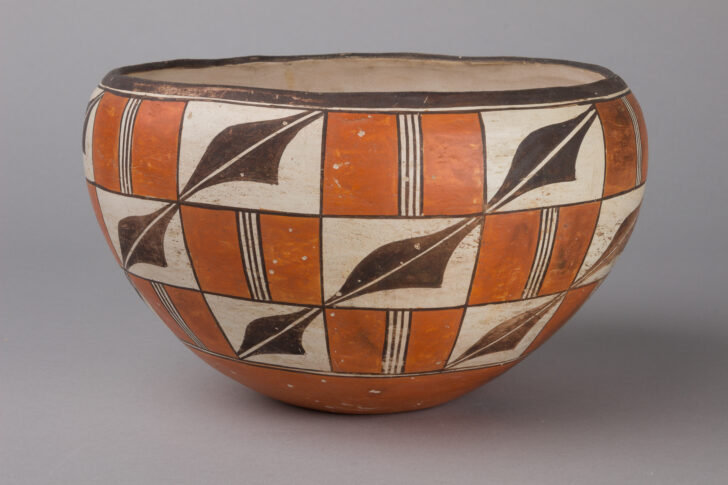Pot
Acoma Pueblo

Description
March 28, 2009
You’re always talking to the pot when you are making it—telling it your feelings—and when you finish a pot you blow life into it and it is given life. —Wanda Aragon, contemporary Acoma potter
Acoma Pueblo is one of the oldest continuously occupied cities in North America. Here pottery has always been a feature of daily life and potters hold a respected position in society; their wares—both everyday and ritual—are considered sacred.
This open-mouthed vessel is an excellent example of early twentieth-century Acoma pottery. It is made using locally mined ground Acoma clay tempered with powdered pottery shards. This results in very strong clay that allows for thin-walled vessels. The pots are formed without a wheel using the coil method. After they are scraped, smoothed, and sanded, fine kaolin clay is used to produce a brilliant white slip (liquid clay) that provides a base for the polychrome designs characteristic of Acoma pottery.
Physical Description:
A squat, gracefully rounded pot with a mouth that is slightly smaller than the widest circumference of the pot, and a tapered base. The interior is colored white (slip). There is a band of black along the rim. The exterior is decorated with a checkerboard-like pattern of alternating rectangles of two designs: brownish-orange divided vertically by a white stripe broken by three thin black lines and white squares divided diagonally with wave-like black shapes.
Usage Rights:
If you are interested in using an image for a publication, please visit https://umma.umich.edu/request-image/ for more information and to fill out the online Image Rights and Reproductions Request Form.